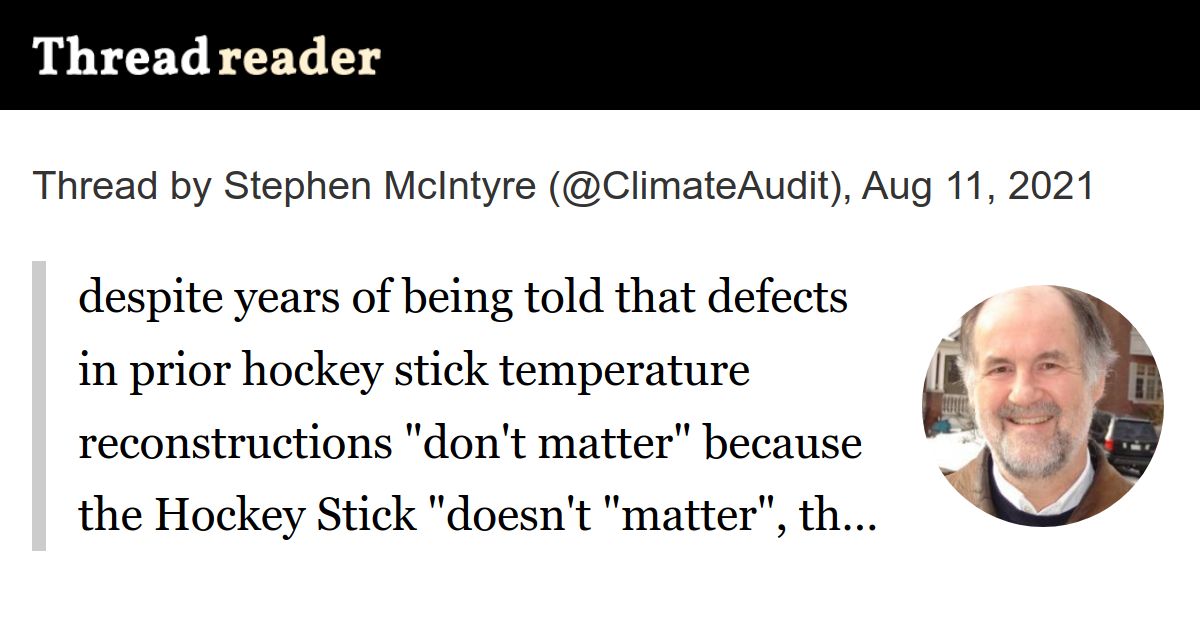Despite years of being told that defects in prior hockey stick temperature reconstructions “don’t matter” because the Hockey Stick “doesn’t “matter”, the first figure of new IPCC Summary for Policy-Makers is a Hockey Stick.
When ordinary people hear the phrase “warmest in more than 100,000 years”, very few know that Chicago was under a mile of ice for most of that period. So when Michael Mann and IPCC zealots demand that we “Make the Climate Great Again”, people need to think whether the climate was really all that “great” in the Ice Age, when there was a mile of ice over much of America.

 threadreaderapp.com
threadreaderapp.com
When ordinary people hear the phrase “warmest in more than 100,000 years”, very few know that Chicago was under a mile of ice for most of that period. So when Michael Mann and IPCC zealots demand that we “Make the Climate Great Again”, people need to think whether the climate was really all that “great” in the Ice Age, when there was a mile of ice over much of America.

Thread by @ClimateAudit on Thread Reader App
@ClimateAudit: despite years of being told that defects in prior hockey stick temperature reconstructions "don't matter" because the Hockey Stick "doesn't "matter", the first figure of new IPCC Summary for Policy-Ma...…




